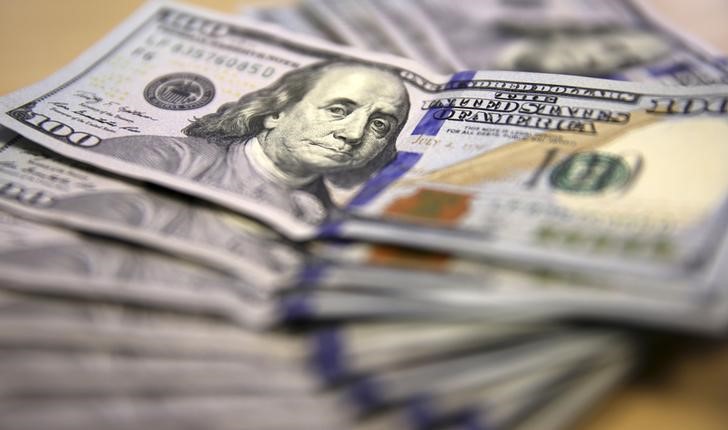Investing.com - The dollar slipped lower against the other major currencies on Thursday amid ongoing uncertainty over whether the Federal Reserve will hike rates this month following the release of weak U.S. inflation data.
The Labor Department said U.S. import prices declined 1.8% last month as the cost of petroleum and a range of goods fell. It was the largest decline in seven months.
In a separate report, the Labor Department said the number of individuals filing for initial jobless benefits last week fell by 6,000 to 275,000 from the previous week’s revised total of 281,000, remaining in territory consistent with a strengthening labor market.
USD/JPY was up 0.12% to 120.67, off the one-and-a-half week highs of 121.28 hit overnight.
The dollar was lower against the euro and the Swiss franc, with EUR/USD rising 0.52% to 1.1263 and USD/CHF sliding to 0.9728.
The dollar was also weaker against the pound, with GBP/USD climbing 0.63% to 1.5461.
The pound received a boost after the Bank of England kept monetary policy unchanged on Thursday and said recent market turmoil related to China’s slowdown hasn’t altered the view that the time for a rate increase is approaching.
The U.S. dollar index, which measures the greenback’s strength against a trade-weighted basket of six major currencies, was down 0.36% to 95.61.
The New Zealand dollar remained sharply lower after the country’s central bank cut interest rates overnight.
NZD/USD was down 1.75% to 0.6286 after the Reserve Bank of New Zealand cut its benchmark interest rate to 2.75% on Thursday.
RBNZ Governor Graeme Wheeler warned that a major slowdown in China could have a negative impact on New Zealand’s economy, underlining fears over a China-led slowdown in global growth.
The Australian dollar was higher, with AUD/USD up 0.72% to 0.7067, boosted by a stronger than expected domestic jobs report.
The Canadian dollar was little changed, with USD/CAD at 1.3246.
Fresh concerns over slowing growth in China hit market sentiment after data released earlier on Thursday showed that while the annual rate of inflation in China edged higher in August producer prices fell at the fastest rate in six years.
Official figures showed that the prices charged by China’s manufacturers fell by an annualized 5.9% in August. It was the largest decline since late 2009.
